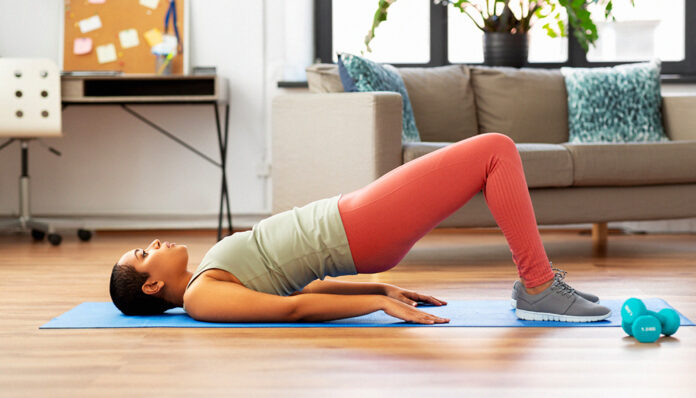Maintaining a strong and healthy pelvic floor is essential for overall well-being and quality of life. Weak pelvic floor muscles can lead to urinary incontinence, discomfort, and even affect sexual function. Thankfully, there are numerous exercises you can perform at home to strengthen your pelvic floor.
1. Kegels
Kegel exercises are the most well-known exercises for pelvic floor therapy at home. They target the specific muscles responsible for bladder control and sexual function. To do Kegels, sit or lie down comfortably, and contract the muscles around your anus and vagina (for women). Contract the muscles around or your anus and base of the penis (for men). Hold the contraction for 5-10 seconds and then release. Repeat this 10-15 times, three times a day.
2. Bridge Pose
The bridge pose is a classic yoga exercise that targets multiple muscle groups, including the pelvic floor. Lie on your back with your knees bent and feet flat on the floor. Press your feet into the ground, lift your hips off the floor, and squeeze your glutes and pelvic floor muscles. Hold for a few seconds before lowering your hips. Aim for 10-15 repetitions.
3. Squats
Squats are fantastic for building overall lower body strength, and they engage the pelvic floor muscles too. Stand with your feet shoulder-width apart, lower your body as if sitting on an imaginary chair, and engage your pelvic floor as you return to a standing position. Do 3 sets of 10-12 squats.
check out my website
4. Wall Sits
Wall sits are similar to squats, but you hold the position for an extended period, targeting the pelvic floor and leg muscles even more. Stand with your back against a wall and lower yourself into a seated position, keeping your knees at a 90-degree angle. Hold the position for 30 seconds to 1 minute, rest, and repeat 3-4 times.
check out my website
5. Flutter Kicks
Flutter kicks are excellent for engaging the lower abdominal muscles and the pelvic floor. Lie flat on your back with your arms at your sides. Lift your legs a few inches off the ground and kick them up and down alternately in a controlled motion. Aim for 30 seconds to 1 minute of continuous flutter kicks.
6. Dead Bug
The dead bug exercise targets the pelvic floor along with the deep core muscles. Lie on your back with your arms extended toward the ceiling and your legs lifted off the ground. Lower your right arm and left leg toward the floor simultaneously while keeping your lower back pressed into the ground. Return to the starting position and repeat on the other side. Do 10-12 repetitions on each side.
7. Pelvic Tilts
Pelvic tilts help improve pelvic mobility and strengthen the pelvic floor. Lie on your back with your knees bent and feet flat on the floor. Gently tilt your pelvis upward, flattening your lower back against the ground. Hold for a few seconds before releasing. Repeat 15-20 times.
8. Standing Hip Abduction
This exercise targets the hip muscles and indirectly engages the pelvic floor. Stand behind a chair or counter for support and lift one leg out to the side while keeping your hips and toes pointing forward. Lower your leg back down and repeat on the other side. Aim for 10-15 repetitions on each leg.
9. Pelvic Clocks
Pelvic clocks are a great way to increase awareness of the pelvic floor and improve its flexibility. Sit comfortably on the edge of a chair and visualize your pelvis as the center of a clock. Tilt your pelvis gently in each direction, from 12 o’clock to 6 o’clock and then from 3 o’clock to 9 o’clock. Repeat for several rounds.
10. Happy Baby Pose
Incorporate this yoga pose into your routine to stretch and strengthen the pelvic floor and hip muscles. Lie on your back and bring your knees toward your chest. Grab the outer edges of your feet and open your knees wider than your hips. Gently rock side to side for a soothing stretch.
Conclusion
Always remember to consult your healthcare provider before starting any new exercise routine, especially if you have pre-existing pelvic health conditions. Stay committed, and your efforts will lead to a healthier pelvic floor and improved quality of life.

